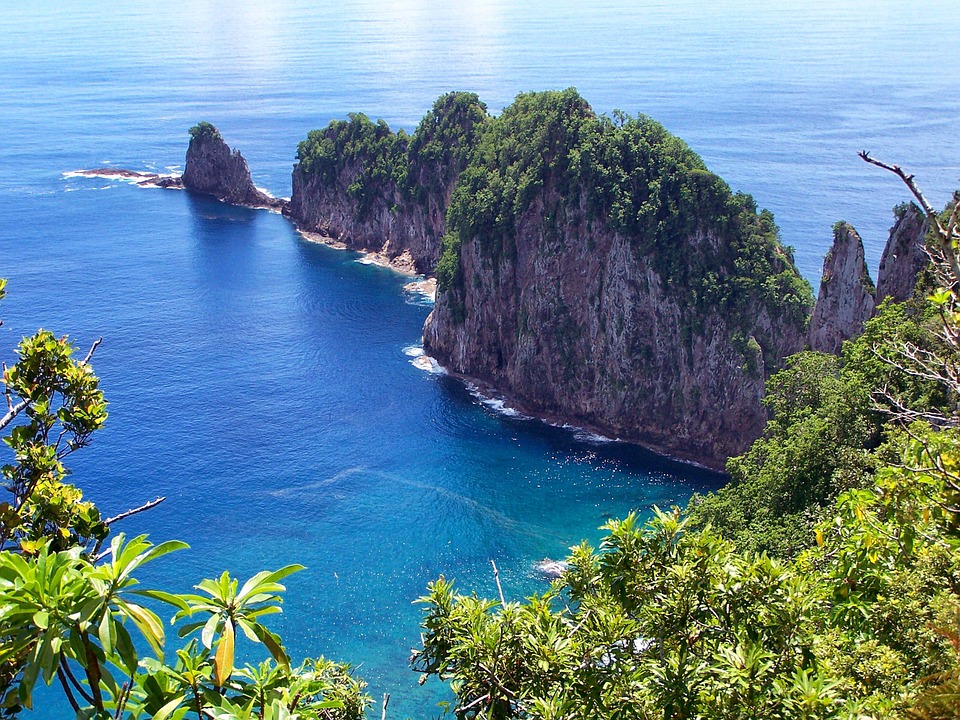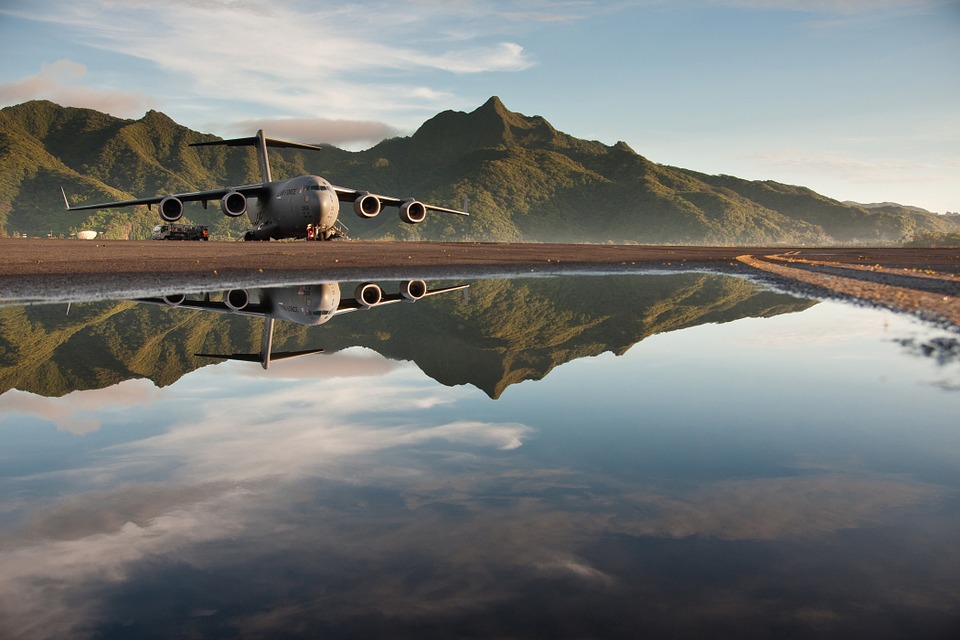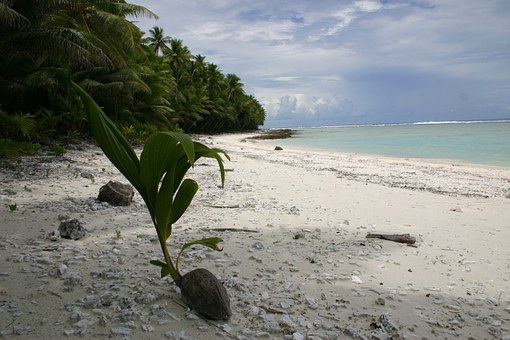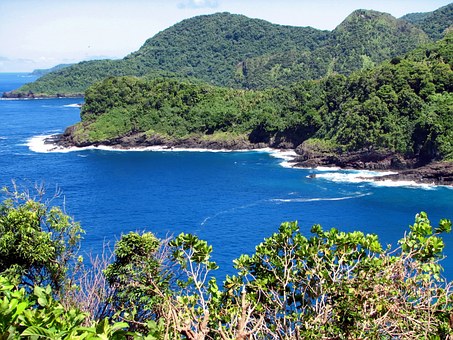Fiji
(Republic of the Fiji Islands)








Capital: Suva
Population (Estimated July 2012): 890,057
Area: 18,272 km2 or 7,055 mi2
Currency: Fiji dollar (F$)
Official Language: English and Fijian
Political Information: Parliamentary Republic
Official Religion: No Official Religion (approximately 55.4% of the population are Protestant, 27.9% are Hindu, 9.1% are Roman Catholic, 6.3% are Muslim, 0.6% have other religious beliefs and 0.7% have no religious beliefs)
Highest Mountain: Tomanivi at 1,324m or 4,344ft
GDP Official Exchange Rate (OER is more precise at gauging a countries economic power)
(Estimated 2011): $3.4 billion (US$) or (GBP)
GDP (OER) Per Capita (per member of the population estimated 2011): (US$) or (GBP)
GDP Purchasing Power Parity (PPP is good for gauging living conditions and use of resources but not as accurate as OER. This data has been calculated based on the sum value of all goods and services produced in the country valued at prices prevailing in the United States)
(Estimated 2011): $4.08 billion (US$) or (GBP)
GDP (PPP) Per Capita (per member of the population estimated 2011): $4,600 (US$) or (GBP)
Time Zone (GMT/UTC): +12:00
Wildlife:
Counties/Provinces/States: 4 divisions and 1 dependency*; Central, Eastern, Northern, Rotuma*, Western
Leaders: President Ratu Epeli Nailatikau with Interim Prime Minister Voreqe Bainmarama.
Additional: Independence from the UK gained on the 10th of October 1970 and celebrated on the second Monday in October.
Sources: CIA World Fact Book, Encyclopaedia Britannica.
Fiji
Fiji is an archipelago of more than 300 islands located in the South Pacific Ocean. It is known for its stunning natural beauty, rich culture, and warm hospitality. The capital city, Suva, is located on the largest island, Viti Levu. The official languages spoken in Fiji are English, Fijian, and Hindi. The country has a diverse population, with indigenous Fijians, Indo-Fijians, and people of other ethnicities living harmoniously together. Fiji is a popular tourist destination, attracting visitors from all over the world who come to experience its pristine beaches, vibrant coral reefs, and lush rainforests. The country’s unique blend of traditional and modern influences makes it a fascinating place to explore.
Fiji has a rich history and is known for its strong sense of community and respect for tradition. The people of Fiji are known for their warm and friendly nature, and visitors are often greeted with a warm “Bula!” which means “hello” in Fijian. The country’s culture is deeply rooted in the traditional practices of the indigenous Fijian people, including dance, music, and storytelling. The traditional Fijian way of life is still very much alive in many parts of the country, and visitors have the opportunity to experience authentic Fijian customs and traditions during their stay. With its stunning natural landscapes and vibrant culture, Fiji offers a truly unique and unforgettable travel experience.
Geography and Climate of Fiji
Fiji is located in the South Pacific Ocean, approximately 1,100 nautical miles northeast of New Zealand’s North Island. The country is made up of more than 300 islands, with the two largest islands being Viti Levu and Vanua Levu. The landscape of Fiji is incredibly diverse, with lush rainforests, cascading waterfalls, and pristine beaches. The islands are surrounded by crystal-clear waters teeming with colourful coral reefs and marine life, making it a paradise for snorkelling and diving enthusiasts. The climate in Fiji is tropical, with warm temperatures year-round. The wet season runs from November to April, with heavy rainfall and the possibility of tropical cyclones. The dry season runs from May to October, with cooler temperatures and less rainfall.
The geography of Fiji offers a wide range of outdoor activities for visitors to enjoy. From hiking through dense rainforests to exploring hidden waterfalls and relaxing on white sandy beaches, there is something for everyone to enjoy. The islands are also home to several national parks and protected marine areas, where visitors can experience the natural beauty of Fiji up close. With its stunning landscapes and favourable climate, Fiji is a popular destination for outdoor enthusiasts and nature lovers.
Culture and Traditions of Fiji
Fiji has a rich and diverse culture that is deeply rooted in the traditions of its indigenous people. The Fijian way of life is centred around community and respect for elders, with a strong emphasis on hospitality and inclusivity. Traditional Fijian customs and ceremonies are still very much a part of everyday life in the country, with events such as mekes (traditional dances) and kava ceremonies being important cultural practices. Mekes are performed to celebrate special occasions or to welcome visitors, and often involve vibrant costumes and rhythmic drumming. Kava ceremonies are a traditional way for Fijians to come together and share a drink made from the root of the kava plant, which is believed to have relaxing properties.
The people of Fiji are known for their warm and friendly nature, and visitors are often welcomed with open arms. It is common for locals to invite visitors into their homes to share a meal or take part in traditional activities. This sense of hospitality is deeply ingrained in Fijian culture, and visitors are encouraged to embrace the opportunity to connect with the local community during their stay. With its strong sense of community and rich cultural traditions, Fiji offers a truly immersive travel experience for those looking to learn more about the customs and way of life of the Fijian people.
Economy and Tourism in Fiji
The economy of Fiji is largely based on agriculture, tourism, and manufacturing. The country’s fertile land allows for the production of a wide range of crops, including sugar cane, coconuts, and tropical fruits. Tourism is also a major contributor to the economy, with visitors flocking to Fiji to experience its stunning natural beauty and vibrant culture. The country offers a wide range of accommodation options, from luxury resorts to budget-friendly guesthouses, making it an accessible destination for travellers of all budgets. In recent years, Fiji has also seen growth in its manufacturing sector, particularly in the production of garments, food products, and beverages.
Tourism plays a significant role in the economy of Fiji, with visitors coming from all over the world to experience its pristine beaches, crystal-clear waters, and vibrant culture. The country offers a wide range of activities for visitors to enjoy, including snorkelling, diving, hiking, and cultural experiences. The warm hospitality of the Fijian people also plays a significant role in attracting tourists to the country, with many visitors returning year after year to reconnect with the local community. With its diverse economy and strong focus on tourism, Fiji offers a unique travel experience for those looking to explore its natural beauty and rich cultural heritage.
Cuisine and Local Delicacies in Fiji
Fijian cuisine is a reflection of the country’s diverse cultural influences, with traditional Fijian dishes being influenced by Indian, Chinese, and European flavours. Seafood plays a significant role in Fijian cuisine, with fresh fish, crab, prawns, and octopus being popular ingredients in many dishes. Coconut milk is also commonly used in cooking, adding a rich and creamy texture to many Fijian dishes. One of the most popular traditional Fijian dishes is kokoda, a ceviche-style dish made with raw fish marinated in coconut cream and lime juice.
In addition to traditional Fijian dishes, the country’s cuisine also features a wide range of Indian-inspired dishes, such as curries and roti bread. Indian spices such as cumin, coriander, and turmeric are commonly used in Fijian cooking, adding depth and flavour to many dishes. Chinese cuisine has also made its mark on Fijian food culture, with dishes such as fried rice and stir-fried noodles being popular choices among locals and visitors alike. With its diverse culinary influences and emphasis on fresh ingredients, Fijian cuisine offers a unique blend of flavours that reflects the country’s rich cultural heritage.
Activities and Attractions in Fiji
Fiji offers a wide range of activities and attractions for visitors to enjoy, from relaxing on pristine beaches to exploring lush rainforests and vibrant coral reefs. The country’s crystal-clear waters are perfect for snorkelling and diving enthusiasts, with an abundance of marine life waiting to be discovered beneath the surface. Visitors can also take part in a wide range of water sports such as kayaking, paddleboarding, and surfing, or simply relax on the beach and soak up the sun.
For those looking to explore Fiji’s natural landscapes, there are plenty of opportunities for hiking through dense rainforests, visiting hidden waterfalls, or taking part in eco-tours to learn more about the country’s unique flora and fauna. The islands are also home to several national parks and protected marine areas where visitors can experience the natural beauty of Fiji up close. In addition to its natural attractions, Fiji also offers a wide range of cultural experiences for visitors to enjoy, including traditional mekes (dances), kava ceremonies, and visits to local villages. With its diverse range of activities and attractions, Fiji offers something for everyone to enjoy during their visit.
Tips for Travelling to Fiji
Travelling to Fiji is an exciting adventure that requires some careful planning to ensure a smooth and enjoyable trip. When visiting Fiji, it’s important to pack appropriate clothing for the tropical climate, including lightweight clothing, swimwear, sunscreen, insect repellent, and comfortable walking shoes for exploring the islands. It’s also important to be mindful of local customs and traditions when visiting villages or participating in cultural activities. Visitors should dress modestly when visiting villages out of respect for local customs.
When it comes to transportation in Fiji, there are several options available for getting around the islands. Domestic flights are available between the main islands, while ferries provide transportation between some of the smaller islands. Taxis are also readily available in urban areas such as Suva and Nadi. For those looking to explore more remote areas of Fiji, renting a car or hiring a local driver can be a convenient option.
In terms of health and safety, it’s important for visitors to take precautions against mosquito-borne illnesses such as dengue fever by using insect repellent and wearing long sleeves and trousers during peak mosquito activity times. It’s also advisable to drink bottled water rather than tap water while in Fiji to avoid any potential stomach upsets.
Overall, travelling to Fiji offers an incredible opportunity to experience the country’s stunning natural beauty, vibrant culture, and warm hospitality. With some careful planning and consideration for local customs and traditions, visitors can enjoy an unforgettable travel experience in this tropical paradise.
FAQs
What is Fiji?
Fiji is an island country in the South Pacific Ocean, comprising of more than 300 islands.
What is the capital of Fiji?
The capital of Fiji is Suva, located on the island of Viti Levu.
What is the population of Fiji?
As of 2021, the population of Fiji is estimated to be around 896,445 people.
What is the official language of Fiji?
The official languages of Fiji are English, Fijian, and Hindi.
What is the currency of Fiji?
The currency of Fiji is the Fijian dollar (FJD).
What is the climate like in Fiji?
Fiji has a tropical marine climate, with warm weather throughout the year. The wet season runs from November to April, while the dry season is from May to October.
What are the popular tourist attractions in Fiji?
Popular tourist attractions in Fiji include the Mamanuca Islands, Coral Coast, Sigatoka Sand Dunes National Park, and the Garden of the Sleeping Giant.
What are the main industries in Fiji?
The main industries in Fiji include tourism, sugar, clothing, copra, gold, silver, and fish.
Political Boundaries of Fiji: Provinces, Districts, or Historical Boundaries.
Fiji, a beautiful island nation located in the South Pacific Ocean, is known for its stunning natural landscapes, rich cultural heritage, and vibrant political history. The political boundaries of Fiji play a crucial role in shaping the governance and administration of the country. The nation is divided into four administrative divisions, namely Central, Eastern, Northern, and Western. Each division is further subdivided into provinces and districts, which help in the effective management and governance of the country. The political boundaries of Fiji have evolved over the years, influenced by historical, cultural, and geographical factors. Understanding the political boundaries of Fiji is essential to comprehend the country’s governance structure and the challenges it faces in maintaining political stability and unity. Summary Fiji’s political boundaries are defined by its provinces and districts, which play a crucial role in the country’s governance and administration. The country is divided into 14 provinces, each with its own unique cultural and historical significance, contributing to Fiji’s rich diversity. Within these provinces, there are 117 districts, each with its own distinct characteristics and local governance structures. Fiji’s historical boundaries have been shaped by colonial influences, indigenous governance systems, and modern administrative reforms. The evolution of Fiji’s political boundaries has been marked by changes in governance structures, land ownership, and the distribution of power, reflecting the country’s complex history and diverse population. Challenges and controversies surrounding Fiji’s political boundaries include issues related to land rights, ethnic tensions, and the decentralization of power. The future of Fiji’s political boundaries will likely be shaped by ongoing debates about governance, land reform, and the country’s commitment to democracy and inclusivity....
Natural Resources of Fiji: Where Natural Resources are located In Fiji
Fiji, an archipelago of over 300 islands in the South Pacific, is blessed with a rich abundance of natural resources. From lush forests to mineral deposits, marine life, and fertile agricultural land, Fiji’s natural resources play a crucial role in the country’s economy and the livelihoods of its people. The diverse range of natural resources in Fiji provides the foundation for various industries, including forestry, mining, fishing, and agriculture. Additionally, Fiji is also making strides in harnessing renewable energy resources to reduce its reliance on fossil fuels and mitigate the impacts of climate change. The sustainable management and conservation of these natural resources are essential to ensure their continued availability for future generations and to protect the unique biodiversity of the islands. Fiji’s natural resources are not only vital for economic development but also hold cultural and ecological significance for the indigenous Fijian people. The traditional knowledge and practices of resource management have been passed down through generations, forming an integral part of Fijian culture. However, the increasing pressures of population growth, urbanization, and climate change pose significant challenges to the sustainable use and conservation of these natural resources. Therefore, it is imperative for Fiji to adopt effective policies and strategies for the conservation and management of its natural resources to ensure their long-term sustainability and resilience in the face of environmental threats. Summary Fiji is rich in natural resources, including forests, minerals, marine life, agriculture, and renewable energy sources. The forest resources in Fiji are diverse and provide important ecological and economic benefits to the country. Fiji has significant mineral resources, including gold, copper, and oil, which contribute...
Cultural or Historical Sites of Fiji: Important Cultural Landmarks or Historical Sites in Fiji
Fiji, a beautiful island nation in the South Pacific, is not only known for its stunning beaches and crystal-clear waters but also for its rich cultural and historical heritage. The country is home to a number of cultural and historical sites that offer visitors a glimpse into Fiji’s fascinating past and vibrant present. From ancient archaeological sites to colonial-era towns, Fiji’s cultural and historical sites are a testament to the diverse influences that have shaped the country over the centuries. Fiji’s cultural and historical sites are a reflection of the country’s unique blend of indigenous Fijian, Indian, European, and Chinese cultures. These sites provide a window into the country’s complex history, from its pre-colonial past to its colonial era and beyond. Visitors to Fiji can explore ancient archaeological sites, traditional Fijian villages, colonial-era towns, and vibrant Hindu temples, all of which offer a deeper understanding of the country’s rich cultural tapestry. Whether you’re interested in history, archaeology, or simply want to immerse yourself in Fiji’s vibrant culture, the country’s cultural and historical sites offer something for everyone. Summary Fiji is home to a rich cultural and historical heritage, with a variety of sites to explore. The Sigatoka Sand Dunes National Park offers a unique landscape and insight into Fiji’s natural history. The Sri Siva Subramaniya Temple is a colourful and vibrant Hindu temple, showcasing Fiji’s religious diversity. The Levuka Historical Port Town is a UNESCO World Heritage site, offering a glimpse into Fiji’s colonial past. The Bouma National Heritage Park is a stunning natural reserve, home to diverse flora and fauna. The Sigatoka Sand Dunes National Park The Sigatoka...
Climate Zones Of Fiji: Different climate regions Of Fiji
Fiji, a beautiful island nation located in the South Pacific, is known for its diverse climate zones. The country experiences a range of climates, from tropical maritime in the low-lying coastal areas to subtropical highland in the interior regions. The climate in Fiji is greatly influenced by its geographical location, with warm tropical waters surrounding the islands. This creates a unique and varied climate that supports a rich and diverse ecosystem. Understanding the different climate zones in Fiji is essential for appreciating the country’s natural beauty and its impact on biodiversity and agriculture. Fiji’s climate can be divided into several distinct zones, each with its own unique characteristics. The low-lying coastal areas experience a tropical maritime climate, with warm temperatures and high humidity. In contrast, the interior regions have a subtropical highland climate, with cooler temperatures and lower humidity. The wettest areas of Fiji are characterized by a tropical rainforest climate, while the western parts of the country have a semi-arid climate. Additionally, there are microclimates and local variations that further contribute to the diversity of Fiji’s climate. Each of these climate zones plays a crucial role in shaping the country’s natural environment and supporting its rich biodiversity. Summary Fiji has diverse climate zones, including tropical maritime, subtropical highland, tropical rainforest, and semi-arid climates. Low-lying coastal areas experience a tropical maritime climate with warm temperatures and high humidity, making it suitable for tourism and agriculture. Interior regions of Fiji have a subtropical highland climate with cooler temperatures, making it ideal for growing crops like fruits and vegetables. The wettest areas of Fiji have a tropical rainforest climate, with heavy...
Terrain and Topography of Fiji: mountains, valleys, and plains.
Fiji, an archipelago of over 300 islands located in the South Pacific Ocean, boasts a diverse and stunning terrain and topography. The islands are characterized by volcanic mountain ranges, lush valleys, lowlands, coastal plains, and plateaus. The terrain is a result of the islands’ volcanic origins and tectonic activity, which have shaped the landscape over millions of years. The topography of Fiji is not only visually striking but also plays a crucial role in shaping the climate, ecosystems, and human settlements on the islands. The terrain of Fiji is a testament to the geological forces that have shaped the islands over time. The rugged and mountainous landscape is a result of volcanic activity, with some of the peaks reaching heights of over 1,000 meters above sea level. The valleys and lowlands are nestled between these mountain ranges, creating a diverse and varied landscape that is home to a wide range of flora and fauna. The coastal plains and plateaus, on the other hand, offer a different perspective of Fiji’s topography, with expansive flatlands that stretch out towards the ocean. Overall, Fiji’s terrain and topography are a reflection of the dynamic geological processes that have shaped the islands and continue to influence life on the archipelago. Summary Fiji’s terrain is characterized by mountain ranges, valleys, lowlands, coastal plains, and plateaus, creating a diverse and varied landscape. The mountain ranges of Fiji, such as the Nakauvadra Range and the Koroyanitu Range, offer stunning natural beauty and opportunities for outdoor activities. The valleys and lowlands of Fiji are home to lush vegetation, fertile soil, and important agricultural activities, contributing to the country’s...
History of Fiji
Fiji, an archipelago of over 300 islands in the South Pacific, has a rich history dating back over 3,000 years. The first settlers are believed to have arrived from Southeast Asia and Melanesia, bringing with them their unique culture and traditions. These early inhabitants were skilled in fishing, agriculture, and pottery making, and they established thriving communities across the islands. In the late 18th century, European explorers, including the famous Captain James Cook, began to visit the islands. This marked the beginning of European influence in Fiji. In 1874, Fiji officially became a British colony, and this period of colonization had a profound impact on the islands. The British brought with them new technologies, such as railways and telegraph lines, and introduced commercial agriculture, particularly sugar cane production. They also brought Indian laborers to work on the sugar plantations, leading to a significant Indian population in Fiji. This period of colonization also saw the introduction of Christianity to the islands, which had a lasting impact on Fijian society. The early settlement and colonization of Fiji laid the foundation for the diverse and multicultural society that exists in the country today. The blending of indigenous Fijian, Indian, European, and other cultures has created a unique and vibrant national identity. The legacy of British colonization is still evident in many aspects of Fijian life, from the legal and political systems to the language and education. Summary Early settlement and colonization in Fiji began around 1500 BCE, with the arrival of the Lapita people. British rule in Fiji began in 1874, and the country gained independence in 1970. World War II had...
Population Density of Fiji
Fiji, a beautiful island nation located in the South Pacific, is known for its stunning natural landscapes, vibrant culture, and warm hospitality. With a population of approximately 900,000 people, Fiji is a diverse and multicultural society, with indigenous Fijians, Indo-Fijians, and other ethnic groups coexisting harmoniously. The population density of Fiji is around 49 people per square kilometre, making it one of the most sparsely populated countries in the world. However, despite its relatively low population density, Fiji faces unique challenges and opportunities related to its population distribution. Understanding the factors affecting population density in Fiji, the impact on infrastructure and services, and the government’s policies and initiatives to manage population density is crucial for sustainable development and planning for the future. Summary Fiji’s population density is relatively low compared to other countries, with most of the population concentrated in urban areas. Factors affecting population density in Fiji include geographical features, economic opportunities, and government policies. Urban population density in Fiji is significantly higher than rural population density, leading to challenges in infrastructure and service provision. High population density in urban areas puts pressure on infrastructure and services, leading to issues such as traffic congestion and inadequate housing. The government of Fiji is implementing policies and initiatives to manage population density, including urban planning and rural development programs. Factors Affecting Population Density in Fiji Several factors contribute to the population density in Fiji. One of the primary factors is the geographical layout of the islands. The rugged terrain and mountainous interiors of the islands make large areas uninhabitable, leading to uneven population distribution. The coastal areas and fertile river...
Discovering the Hidden Gems of Fiji: A Journey Through the Paradise Islands
Fiji, located in the South Pacific Ocean, is an archipelago made up of 333 islands. It is known for its stunning natural beauty, pristine beaches, and vibrant culture. The country is situated east of Australia and north of New Zealand, making it a popular destination for travelers seeking a tropical paradise. Fiji’s geography is diverse, with lush rainforests, towering mountains, and crystal-clear waters. The islands are surrounded by coral reefs, which are home to a rich variety of marine life. The culture of Fiji is deeply rooted in tradition and hospitality, with the locals known for their warm and welcoming nature. Fiji has gained a reputation as a tropical paradise, attracting tourists from all over the world. The islands offer a range of activities and attractions, from relaxing on white sandy beaches to exploring vibrant coral reefs. Whether you’re looking for adventure or relaxation, Fiji has something to offer everyone. Summary Fiji is an archipelago of natural wonders, with hidden gems waiting to be discovered. Divers will find paradise exploring Fiji’s coral reefs, while beach lovers can escape to secluded shores. Traditional Fijian villages offer a cultural journey, while hiking trails take you through the wilderness. Fiji’s magnificent waterfalls are a natural wonder, and thrill-seekers can find adventure activities. Don’t miss out on the delicious cuisine of Fiji, and plan your trip according to the best time to visit. The Top Hidden Gems of Fiji: Uncovering the Untouched Beauty While Fiji is well-known for its popular tourist destinations such as Nadi and Denarau Island, there are also many hidden gems waiting to be discovered. These lesser-known destinations offer a...





















